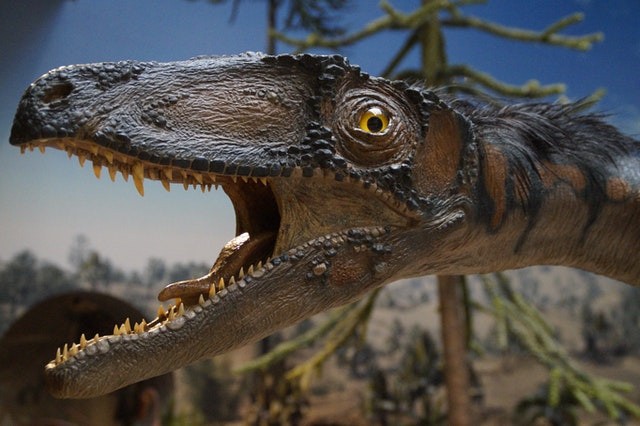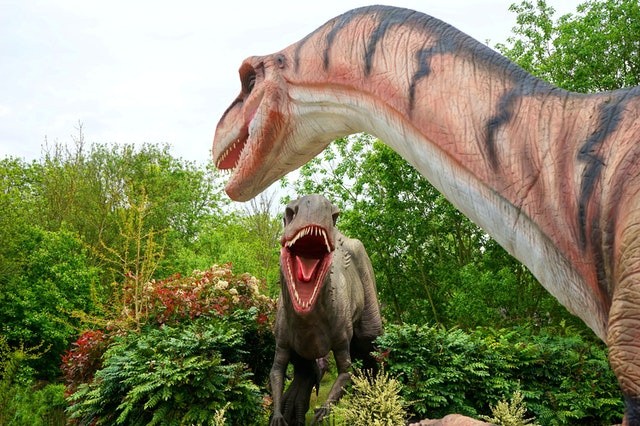A new study has emerged and it identifies an unconventional new species, which suggests that dinosaur-era sea lizards thrived luxuriously before an asteroid wiped them all out about 66 million years ago.

Known as a mosasaur, the ancient marine lizard was found to have sharp, shark-like teeth, giving the reptile a super-deadly slicing bite.
Sea Reptilian Could Grasp Animals Larger Than Its Weight, Report Says
Xenodens calminechari, which lived during the Cretaceous period in Morocco, was known to have packed, knifelike teeth arranged neatly from one edge to another. The crowded teeth looked like a serrated blade resembling those of some specific sharks.
The cutting teeth let the small but agile mosasaur, which is no larger than a porpoise have a biting power to grasp something larger than its overall weight. It can cut fish in half with a single bite and even take large bites from much bigger animals.
The lead author of the paper, Dr. Nick Longrich, stated that Africa's coasts were among the most dangerous seas worldwide about 66 million years ago.
ALSO READ: Smallest Dinosaur Discovered in Amber
New Discovery Adds to The Growing List of Predators During Dinosaur Era, Says Lead Author
According to the Senior Lecturer at the Milner Center for Evolution at the University of Bath, the predator diversity during the dinosaur era was quite unlike anything seen anywhere else around the world.
This new mosasaur adds to a growing list of marine vertebrates from the latest Cretaceous of Morocco which was submerged under a tropical sea at the time.
The study indicated that diverse mosasaurs thrived there. Some of these sea-going lizards were giants with huge teeth and grew up to 10 meters long while others were deep-diving predators just like the modern sperm whales.
They were all apex predators like orcas.
Some mosasaurs ate lots of shellfish like sea otters while the bizarre little Xenodens co-existed alongside the mosasaurs.
The mosasaurs existed together with saber-toothed fish, giant sea turtles, and long-necked plesiosaurus.
The new mosasaurs are just one of the other top predators added to the rapidly growing mix of tough guys in the dinosaur era.
This discovery has added to the diversity of sea-going reptiles within the late Cretaceous. It appears to suggest that the variety of mosasaurs peaked right before the asteroid that wiped them all out 66 million years ago.
It was a devastating hit that eliminated oceangoing reptiles along with their counterparts, the dinosaurs.

Research Still Ongoing to Figure Out More About Ocean-going Reptiles
Dr. Longrich states that the research team is still trying to figure out just how diverse the marine reptiles were. The funny thing is that while they were at the very edge of figuring them all out, they encountered another species of oceangoing reptiles.
It is believed that the creatures live within a million years before the hit by the asteroid that took them all out at the end of the Cretaceous period.
This summarily ended the reign of the dinosaurs as well as over 90 percent of all species on the planet.
The remarkably high diversity observed in this new study suggests that the ecosystem was far from being in decline before the asteroid destruction.
In fact, the ecosystem suggests that oceangoing animals were rapidly expanding in diversity before they suddenly went extinct.
According to Dr. Nour-Eddine Jalil of the Universite Cadi Ayyad in Marrakech and the National Museum of Natural History in Paris, mosasaurs with sharp, shark-like teeth is a new adaptation of mosasaurs that is somewhat surprising as it looked just like a fantastic creature right out of an artist's imagination.
For more news, updates about dinosaurs and similar stories, don't forget to follow Nature World News!
© 2025 NatureWorldNews.com All rights reserved. Do not reproduce without permission.





